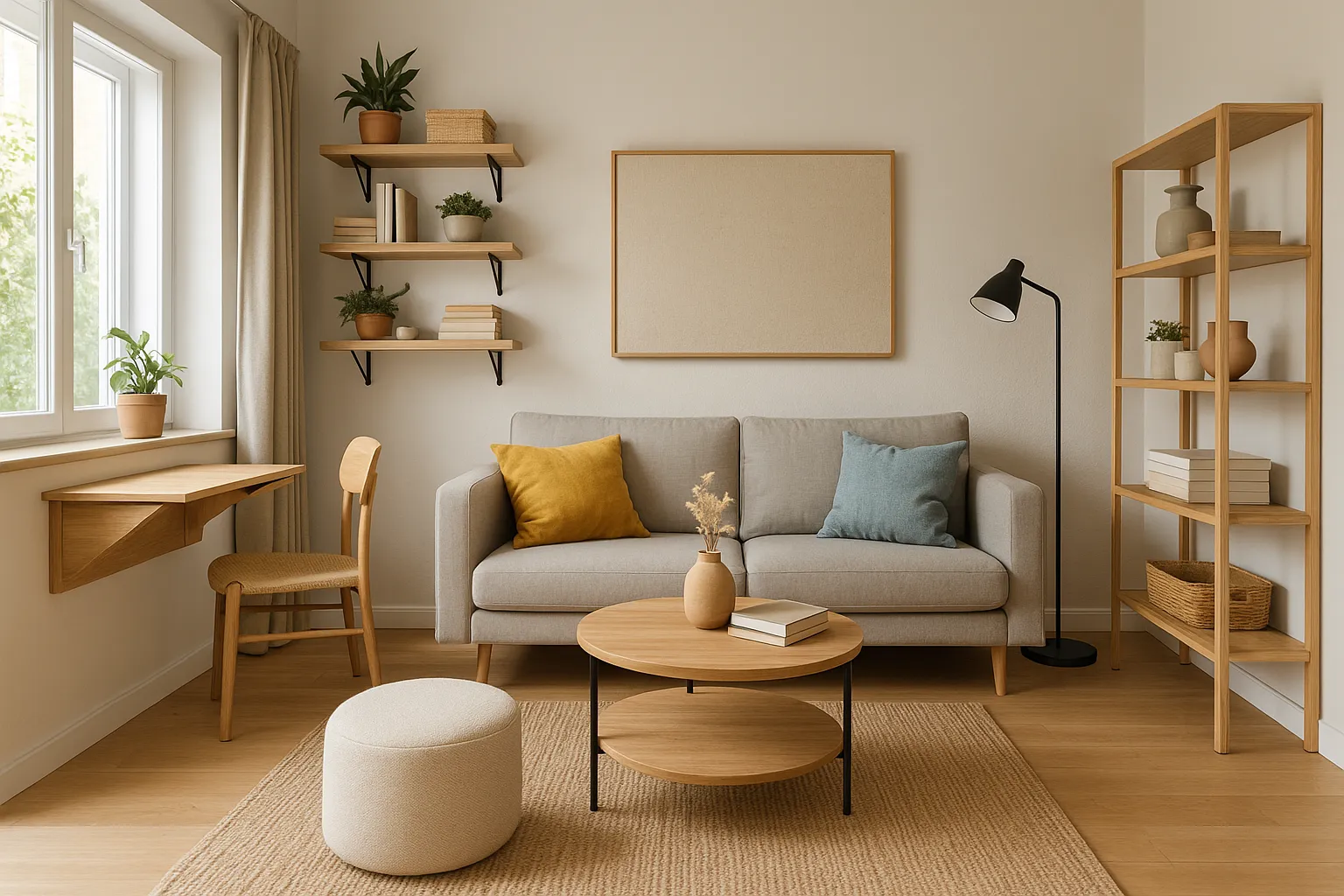Creating a stylish and functional home can be challenging, especially when dealing with small spaces. However, with the right strategies, even the tiniest rooms can feel open, inviting, and perfectly tailored to your lifestyle. In this article, we’ll explore some of the most effective design ideas for transforming small spaces, helping you make the most of every square inch.
Choose Multi-Functional Furniture
When space is limited, every piece of furniture needs to work harder. Multi-functional furniture is a lifesaver in small homes because it serves more than one purpose, saving both space and money. Here are a few popular options:
- Sofa Beds and Daybeds: Perfect for studios and one-bedroom apartments, these pieces provide seating during the day and a comfortable sleeping area at night.
- Storage Ottomans: Use them as footrests, coffee tables, or additional seating while also storing blankets, pillows, or magazines inside.
- Foldable and Nesting Furniture: Desks that fold against the wall, nesting tables, and stackable chairs can be tucked away when not in use.
Investing in these types of furniture not only saves space but also reduces clutter, creating a more organized and visually appealing environment.
Use Vertical Space Wisely
When floor space is scarce, look up. Vertical storage solutions can dramatically increase your home’s capacity without crowding the floor. Some ideas include:
- Tall Bookcases and Shelving Units: Reach for the ceiling with tall bookcases or wall-mounted shelves to maximize storage.
- Wall Hooks and Pegboards: Great for kitchens, entryways, and home offices, these can hold everything from utensils to office supplies.
- Lofted Beds or Platforms: If you’re really tight on space, consider raising your bed to create additional storage or workspace underneath.
Using your vertical space effectively can help keep your floors clear, making your room feel larger and more open.
Light it Right
Proper lighting is crucial in small spaces, as it can dramatically change the perception of a room’s size. Here’s how to make the most of your lighting:
- Natural Light: If possible, avoid heavy curtains or blinds that block natural light. Use sheer or light-colored window treatments to let the light in.
- Layered Lighting: Combine overhead lighting, task lights, and ambient lighting to create a balanced, inviting atmosphere.
- Mirrors: Strategically placed mirrors can reflect natural and artificial light, making a small room feel twice as large.
Consider using dimmable lights to adjust the mood depending on the time of day or occasion, adding flexibility to your small space.
Embrace MinimalismIn small spaces, less truly is more. Clutter can quickly overwhelm a small room, making it feel cramped and chaotic. Instead, embrace a minimalist approach:
- Declutter Regularly: Only keep what you truly need or love. Donate or sell items that no longer serve a purpose.
- Hidden Storage: Use furniture with hidden compartments, like beds with drawers or coffee tables with storage, to keep the mess out of sight.
- Choose a Simple Color Palette: Light, neutral tones like white, beige, or soft gray can make a room feel larger and more open.
Minimalism doesn’t mean your space has to be boring. Add personality through texture, art, and a few well-chosen decorative items.
Choose the Right Color Palette
Color can have a powerful impact on how spacious a room feels. For small spaces, consider the following tips:
- Light Colors for a Brighter Feel: Whites, pastels, and light grays reflect light, making a room feel more open.
- Monochromatic Schemes: Using different shades of the same color can create a cohesive, spacious feel.
- Accent Walls and Bold Hues: If you want a pop of color, limit it to one wall or a few decorative elements to avoid overwhelming the space.
You can also use contrasting colors strategically to define different zones in an open-plan layout without the need for physical dividers.
Create Zones with Rugs and Furniture
Even in small spaces, it’s important to create distinct zones for different activities. This helps the space feel more organized and functional. Here’s how:
- Area Rugs: Use rugs to define different areas, like separating a living space from a dining nook.
- Open Shelving as Dividers: Use tall, open shelves to divide spaces without completely closing them off.
- Furniture Arrangement: Place furniture in a way that encourages natural movement through the space.
This approach helps avoid the feeling of a “one-room-fits-all” layout, adding structure and comfort to your home.
Add Personality with Smart Decor Choices
Small spaces can still showcase your style and personality without feeling cluttered. Here are some smart ways to do this:
- Floating Shelves: Use these to display art, photos, or small decorative items.
- Personal Collections: Choose one or two key collections to display rather than trying to show off everything.
- Wall Art and Statement Pieces: Opt for larger pieces instead of many small items, which can make a space feel cluttered.
Remember, a few impactful pieces often make a bigger statement than many small, scattered ones.
Final Thoughts: Make Your Space Yours
Transforming a small space into a beautiful, functional home is all about smart planning and creativity. Focus on multi-functional furniture, clever storage solutions, and a minimalist mindset to create a space that not only looks great but also works for your lifestyle.
With these strategies in mind, even the smallest studio or apartment can become a stylish, personalized retreat. So, don’t let limited square footage hold you back – embrace the challenge and let your creativity shine.
